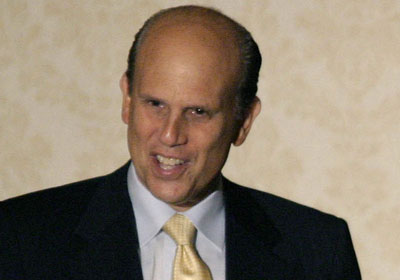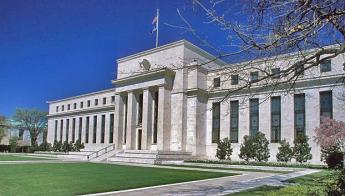Related Topics
Banking Panic 2007-2009 (1)
Mankind hasn't learned how to control sudden wealth, whether in families, third-world countries, or the richest nation in history. The world banking crisis of 2007 is the biggest example yet.
Securitization

|
| Michael Millken |
It is not fanciful to link the credit crunch of 2007 with the savings and loan problems two decades earlier. Both bubbles were related to home mortgage financing, and the first bubble turned destructive by seeking money to keep itself going. If dammed-up surpluses of the Middle East and China could be made available to American mortgage lenders, there seemed to be ample demand for them. Furthermore, while Michael Millken is mostly known for his prison sentence, he had nevertheless made an important observation. Risky mortgages were generally overpriced. That is, the aggregate extra cost of subprime defaults was appreciably less than the aggregate extra interest being charged for them. If some way could be found to make the risk premium more appropriate to the actual risk, home mortgages would get permanently cheaper, and mortgaging profits would likely be gratifying. Mortgages needed a better system for establishing appropriate interest rates, and they needed more of that underemployed wealth of the Orient. Derivatives suggested themselves as a solution for both issues.

|
| Chairman Alan Greenspan |
The unaccustomed wealth of Asia and the Persian Gulf was put under heavy pressure to migrate to America by lack of local investment opportunities but was bottled up by rudimentary banking systems in the developing world. As ways were found to get around obstacles for exporting this money, the danger increased of "asset bubbles" inflating whatever they touched, for example, the dot.com stocks in 2001. The pressure indeed needed to be deflated, but carefully. Furthermore, certain accords reached in Basle around 1982 made it even easier for banks to issue loans, while the favored tax treatment of interest from residential real estate loans directed lending to home mortgages. Indeed, the calculated cost comparison between buying a home or renting it had once remained identical for fifty years but began to diverge in 1982. By 2007, it was significantly more expensive to buy than to rent, even though many analyses suggested a housing surplus existed, particularly in California and the Southwest. While the interest-rate premise was correct, the earlier campaign against "redlining" probably did encourage loans to people who could not afford the house, and there was momentum to this idea. But the most obvious stimulus to continued high-priced home purchasing, in the face of a growing over-supply, was the momentum of abundant cheap money. To mop up a growing housing surplus, initially low "teaser" interest rates were offered for ARMs, or adjustable rate mortgages which could abruptly adjust upward after a few years. A growing problem was being set up to go over a cliff. Chairman Alan Greenspan fretted at his seat on the Federal Reserve Board that it was difficult -- a conundrum -- why market interest rates for long term borrowing did not rise enough to put a stop to this. In retrospect, it seems likely the risk premium had long been too high and was now reaching for more appropriate levels. Derivatives were the main instrument for bringing rates down, and they did it with breathtaking speed, perhaps overshooting in the process. As is often the case with innovation, the risk of failure was overemphasized, while the dangers of success received little attention.
Credit derivatives can also be viewed as a form of insurance, protecting the lender if the borrower defaults. That doesn't sound like a bad thing. True, all insurance creates a "moral hazard" that encourages risky behavior by reducing its pain. No one, it is said, washes a rental car. But in a housing surplus, the insurance protection allows banks to take more chances in marginal situations, using up the surplus. Young folk is allowed to get started in life; the poor are allowed to enjoy the American dream. Unfortunately, some will abuse the privilege by buying speculative houses in a rising market, and "flip" them. Many will buy bigger houses than their income can support. Some, who should more wisely rent because their employment prospects are not secure, will be tempted to buy. All of these considerations are wrapped up in the interest rate the lender charges, so eventually, interest rates will rise to a level that anticipates -- discounts -- them. Interest rates did not rise. The old levels of risk "premium" did not reappear.
It seems now that increased demand stimulated by derivatives was not resisted by a shrinking supply of money, with a balance maintained by the adjustment in interest prices. Indeed, a good even brilliant idea was crippled by a series of responses to the puzzling environment. Banks learned to sell pretty much any mortgage as quickly as it was created; after that, the extra risks were none of their concern. It has been suggested that banks be required to retain a portion of any loan they originate but to do so would exhaust the bank's lending capacity during a bonanza of business. Standards for a bank's lending capacity are set by the Federal Reserve, as a multiple of their retained profits or reserves. Those capacity limits had been relaxed by the Basle accords, but only on condition, the banks restricted themselves to AAA-rated loans. This will turn out to be a critical point because it put unwarranted reliance on the opinion of the rating agencies, and in any event, led to "tranches".

|
| Federal Reserve Building |
Here's how things roughly went. Investment banks learned to buy up and combine great bunches of these mortgages into a bundle. The bundle was then sliced into tranches of lesser bundles, attempting to sort out the bundles by their credit rating. Elegant mathematical formulas were brought forward which did a fairly good job of sifting the potentially weak loans away from another bundle that was largely risk-free. Those better sub-bundles, thought to warrant a AAA rating, were then sold to institutions who were restricted to them by the Basle accords but paid a lower interest return than the mortgage pool they came from. That was already an uncomfortably low rate by historical standards, now made lower. However, in view of its superior quality with default risk removed, it could be bought with borrowed money, eventually creating an adequate but leveraged return after costs. The debt was thus piled on debt, and the process repeated with exaggeration on the next lower quality tranche, the AA paper. And so on down to the lowest grade, which was thought to contain all or almost all of the default risk in the whole mortgage pool. People who bought the lowest tranche were real risk takers, experts who knew what they were doing, receiving a premium interest return to do it. Because this process was thought to create a sophisticated assessment of the true risk in the bundle, it was thought it would justify lower rates for everybody, squeezing out the unnecessary cushion of comfort. It was a plausible idea, and if it worked, it would be a brilliant one. But it had a big unrecognized flaw. It assumed that essentially all of the defaults would occur at the bottom of the pile, or possibly at the next higher level. There would be no defaults in the AAA level until all of the lower tranches had been wiped out -- an almost inconceivable economic calamity.
Ingenuity was then carried to yet another level. Credit derivatives are a form of insurance against default, but there was a more traditional form already in existence. Several so-called monoline companies offer insurance against default, backed by the enormous strength of pooled resources of a number of the largest strongest financial institutions in the world. The rating agencies assess their strength as AAA, the highest quality. Now, it was reasoned, if a tranche of mortgages rated AA by the agencies were insured by an insurance company, itself rated AAA, then the effective risk to the investor was really only AAA, or negligible. Alchemy. The lead was turned into gold. Unfortunately, when the panic finally hit, monoline insurance stock which was considered rock-solid at $80 a share, was soon selling for $15. The flaw in all this was that the rating of the bond was based on the credit rating of the borrowers. No one had supposed that people who were quite able to pay their debts would walk away from them. When home prices fell only ten or so percent, many of them fell below the cost of the borrowed-up mortgage. Instead of feeling horror at defiling their credit reputation, many of these prosperous borrowers regarded foreclosure as simply a business decision. The protection of monoline default insurance was trivialized when one of the smartest investors in the world, Warren Buffett, announced he proposed to form a company to ensure municipal bonds, and only municipal bonds, against default. Since that might strip away what had become the only profitable portion of the monoline portfolio, the prospect of such crippled companies paying housing claims would be bleak. Pseudo AAA tranches were now clearly back to being AA, and even real AAA tranches were under a cloud. All of this was not anticipated.
There remain two other questionable developments in this colorful adventure: the role of the rating agencies, and off-the-books behavior by the regulated mortgage originators.
Originally published: Monday, February 11, 2008; most-recently modified: Wednesday, June 05, 2019